Bunnahow
Houses within 10km of this house
Displaying 21 houses.
Houses within 10km of Bunnahow
Displaying 21 houses.
| House name | Description | |
|---|---|---|
| Lough Cutra (Lough Cooter) | In 1814 Loughcooter was the residence of C. Vereker, MP while Lewis records it as the seat of Viscount Gort. In the 1850s it was owned by Viscount Gough and was valued at £80. In 1906 it was still in the possession of Lord Gough when the buildings were valued at £300. Lough Cutra is still extant and occupied. A restoration programme is underway since 2000 and the castle is now available as an event location. Some of the stable yard has been converted into holiday cottages. See www.loughcutra.com. |

|
| Prospect (Kiltartan) | Occupied by A. Nolan in 1814. Lewis records Prospect as the seat of Nolan in 1837. By the time of Griffith's Valuation it appears to have been part of the estate of the representatives of Vicesimus Knox and leased to William Mulville. The house is still extant and occupied. |
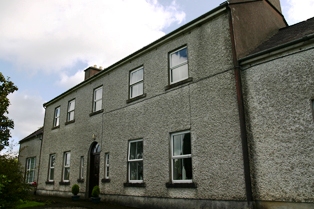
|
| Ashfield House | The house at Ashfield seems to have been known as Clooneene, particularly when it was the home of the Blake Forster family. In 1814 it was the home of Francis Blake Forster but by 1837 Lewis records it as in the ownership of D. McNevin. Earlier, in 1786, Wilson wrote that it was the seat of Mr. Forster. Ashfield House is demolished but substantial parts of the walled garden and the gate lodge are still extant. |

|
| Ballygeagin House | In 1837 Lewis lists Ballygaggen as a residence of the Butler family. Timothy Killeen was renting the house in the townland of Ballygaagin, barony of Kiltartan, from Robert J. Lattey in 1855 when it was valued at £10. Though buildings still exist at the site the original house is not extant. | |
| Cregg House | The house at Cregg seems to have been built by Francis Butler in the 18th century. Wilson refers to it as the seat of Mr. Butler in 1786. In 1814 it was the residence of Walter Butler and Lewis also records it as a Butler house. At the time of Griffith's Valuation it was occupied by Robert J. Lattey and was valued at £25. This also included the premises known as Cregg Cottage which was located in the demesne. In 1906 it was owned by Robert Thomas Lattey and was valued at £33. The original house is no longer extant. |
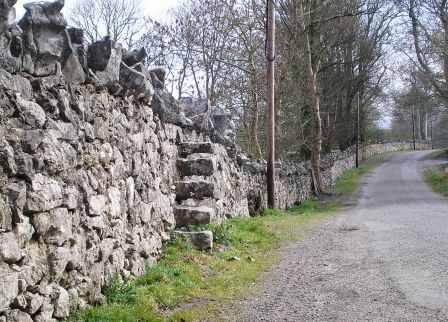
|
| Rosepark House | Tradition suggests that Francis Blake Forster let Clooneene (Ashfield) and built a house which he called Rosepark, after his wife, Rose Ffrench. Rosepark House is recorded by Lewis in 1837 as the seat of the Hugo family. It was leased by Michael Kane to George Crowe at the time of Griffith's Valuation. It was then valued at £12. Apart from some estate walls there is no evidence of this property now. | |
| Castle Lodge/Fiddane House | At the time of Griffith's Valuation the property at Fiddaun was occupied by Edward Blacquiere and was valued at £10. Castle Lodge is recorded as the home of Charles Lopdell in 1814. In 1837 Lewis also recorded it as a seat of the Lopdell family. It is labelled Castle Lodge on the 1st edition Ordnance Survey map but as Fiddane House on the later 25-inch map of the 1890s. It is still extant and occupied. |
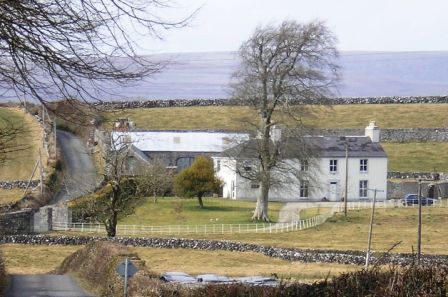
|
| Russaun (Russane) | Russaun, sometimes spelt Russane, appears to have become part of the Gregory estate, though occupied by the Bagot family, by the mid-19th century. At the time of Griffith's Valuation it was leased by William Gregory to John Bagot. However, in 1837 it was recorded by Lewis as the residence of the Lahiffe family. It is still extant and occupied. |

|
| Ballyturin | At the time of Griffith's Valuation Ballyturin House was the residence of John Bagot. In 1906 John C. Bagot was the owner of the house which was valued at £17. It was located in a commanding position overlooking rolling countryside. In May 1921, an RIC man (District/Inspector Cecil Blake), his wife and two British Army officers (Capt Cornwallis and Lt McCreery) were killed in an ambush by South Galway/East Clare Irish Volunteers at the gates of Ballyturin House. Margaret, Mrs Robert Gregory of Coole Park (Lady Gregory's daughter-in-law) escaped without injury. Ballyturin is now a ruin. |
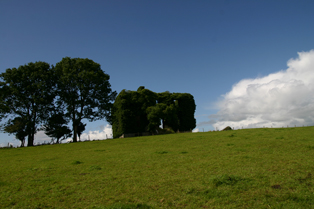
|
| River View | River View was recorded as a seat of the Lopdell family by Lewis in 1837. By the time of Griffith's Valuation it was owned by the representatives of Vicisimus Knox and was being leased by the Vereker estate when it was valued at £5. It is now in ruins. | |
| Rosemeade/Lisheen | At the time of Griffith's Valuation this property was leased by Matthew Rosengrave to Patrick Carrick and valued at £21. It was accompanied by over 200 acres. In 1814 Lisheen was the seat of Jer. Rosingrave. The house is labelled on both the first and 25-inch editions of the Ordnance Survey map as Rosemeade but today is known as Lisheen. It is still extant and occupied as a farm house. |

|
| Rosehill | The house at Rosehill is included in the sale of the estate of Denis Boland of Gort, in the Land Judges' Court, in the 1880s. It appears on the 1st editon Ordnance Survey map but is not marked on the 25-inch edition of the 1890s. An old entrance gateway survives. |

|
| Rindifin Cottage | In 1786 Wilson refers to Rhyndifen as the seat of Prendergast Smyth. Lewis records Rhyndifin as the seat of the Blaquiere family in 1837. It was occupied by Mary Moloney at the time of Griffith's Valuaiton, leasing from the Knox estate and was valued at £4. The entrance gateway is extant and a house still occupies the original site. |

|
| Tiraloughan | In 1906 Lord Gough owned a property valued at almost £4 at Tiraloughin, parish of Beagh as well as over 100 acres of untenanted land. A house still exists at this location. | |
| Derryowen | A home of a branch of the Lopdell family in the 19th century held in fee and of their descendants the Blaquieres in the late 19th and 20th centuries. In July 1889 the notice announcing its proposed sale in the Land Judges' Court describes it as "a very good newly-built dwelling-house, with suitable out-offices". There is still an occupied house at the site. | |
| Rathorp | Lewis records Ratope as the residence of the late J. Foster. At the time of Griffith's Valuation it was in the possession of Patrick Geoghegan who held the property from the Marquess of Thomond and 526 acres. The house was valued at £7.10 shillings. A house still exists at the site. |
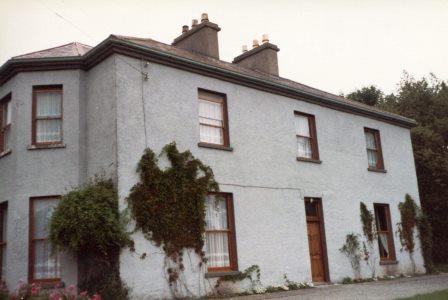
|
| Rockforest | A home of Bindon Blood throughout the first half of the 19th century and later of his son, Bagot Blood, who died in 1897. It was held in fee by Bindon Blood at the time of Griffith's Valuation, when it was valued at £12. The house shown on the 1st edition Ordnance Survey map was replaced by a later house a short distance away. A house is still extant at this site. | |
| Rockvale | Originally a D'Arcy home, built in the 1780s. Rockvale was the home of J. D'Arcy in 1837. By the time of Griffith's Valuation the house was occupied by John Mullins and valued at £7. 10 shillings. Mullins was leasing from the Marquess of Thomond. It is labelled Rockvale House (Constabulary Barracks) on the 25-inch Ordnance Survey map of the 1890s and is now a ruin. |
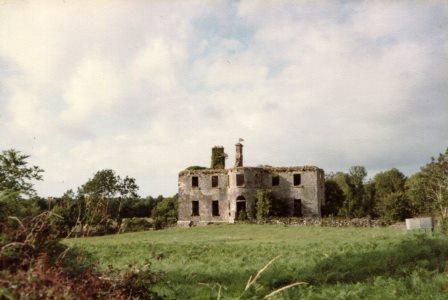
|
| Ballyline | Weir writes that this house was also known as Millbrook. It was occupied by Henry Butler in 1814 but had reverted back to another branch of the family by 1837 when Austin Butler was the proprietor. Austin Butler held the house in fee at the time of Griffith's Valuation, when it was valued at £15. The representatives of Theobald Butler held the house and 428 acres of untenanted land in 1906. The house was demolished by the Land Commission before the 1940s and the land divided. | |
| Doon | This is the property also known as Doonemulvilhill where James Butler settled in 1684. The Butlers lived here during the 18th and early 19th centuries. By the 1850s however Edward Galway was living in the house and held the townland from George Wyndham. A modern house now occupies the site. | |
| Glenwilliam | The residence of James Blake Butler in 1837. Occupied by John McNamara in the early 1850s and held from Lord Fitzgerald and Vesci when it was valued at almost £5. Still extant and occupied. |

